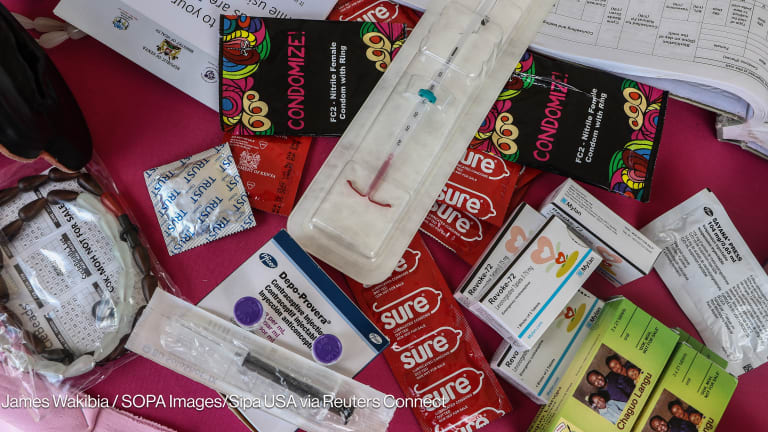
KIGALI, Rwanda — As more than 3,500 advocates gather in Rwanda for the biggest event in the reproductive health community’s calendar, new data has revealed that family planning targets are way off track.
The latest annual report from the Family Planning 2020 partnership was published Monday at the International Conference on Family Planning in Kigali. Despite a target to reach 120 million more women and girls in the world’s 69 poorest countries with modern contraceptives by 2020, there have been only 46 million new users over the past six years, the latest figures show.
“Looking at projected trends, the hill is simply too steep to climb in the two short years remaining in this initiative.”
— FP 2020, Catalyzing Collaboration 2017-2018FP2020 was launched in 2012, spearheaded by the Bill & Melinda Gates Foundation, the United Nations and the United Kingdom and United States governments. As well as increasing the use of modern contraceptives, it is tasked with widening the availability of different contraceptive methods. While the report says there have been “shifts in method mix,” with implants becoming more common and female sterilization less so, overall “the most common method in use in each country has remained largely unchanged over time.”
“As much as we’ve accomplished, we recognize that our original ambitious goal of 120 million additional users of contraception will not be reached by 2020. Looking at projected trends, the hill is simply too steep to climb in the two short years remaining in this initiative,” the report states.
Highlights from the London Family Planning Summit
The major international summit, held in the United Kingdom, brought together leaders and family planning experts, and raised at least $2.5 billion in new commitments for reproductive health. Devex runs through what you need to know.
The Sustainable Development Goals call for universal access to family planning by 2030. Today, more than 300 million women have access to modern family planning, but over 200 million do not, and 25 million unsafe abortions take place every year, according to data from the Guttmacher Institute.
In light of slow progress, family planning advocates are asking what will happen to the partnership post-2020 when the commitment period runs out. The group raised approximately $2.5 billion at its last replenishment conference in London.
Chris Elias, president of global development at the Gates Foundation, called on the family planning community to “go beyond our linear thinking and be disruptive” to come up with new approaches to driving contraceptive uptake. Elias told reporters at ICFP this needs to include working more with the humanitarian and HIV communities; engaging young people in a nonpatronizing or stigmatizing way; and embracing transformative technologies, such as new injectable contraceptives.
“There are many things we have to do ... We can’t just keep doing more of what we’re doing,” he said.
However, the report does include some positive news. While overall access rates have not risen as fast as hoped, they still represent a nearly 30 percent increase on pre-2012 levels, according to Jason Bemner, director of performance and data management at FP2020. There were also country success stories such as Kenya, which surpassed its FP2020 targets in 2016 and has set new goals.
International funding for family planning has also increased, albeit slightly, from $1.2 billion in 2016 to $1.27 billion in 2017. This remains below the 2014 peak of $1.43 billion.
For the first time, FP2020 also reports on domestic government spending on family planning in 31 countries, showing that India, Bangladesh, and Indonesia had the highest allocations in 2016.
Dr. Natalia Kanem, executive director of the U.N.’s sexual and reproductive health agency, UNFPA, called the report a “treasure trove” of data during a press conference.
“Now we are providing insights when before we were in the dark … [this data] can tell us who is being left behind,” she said.








